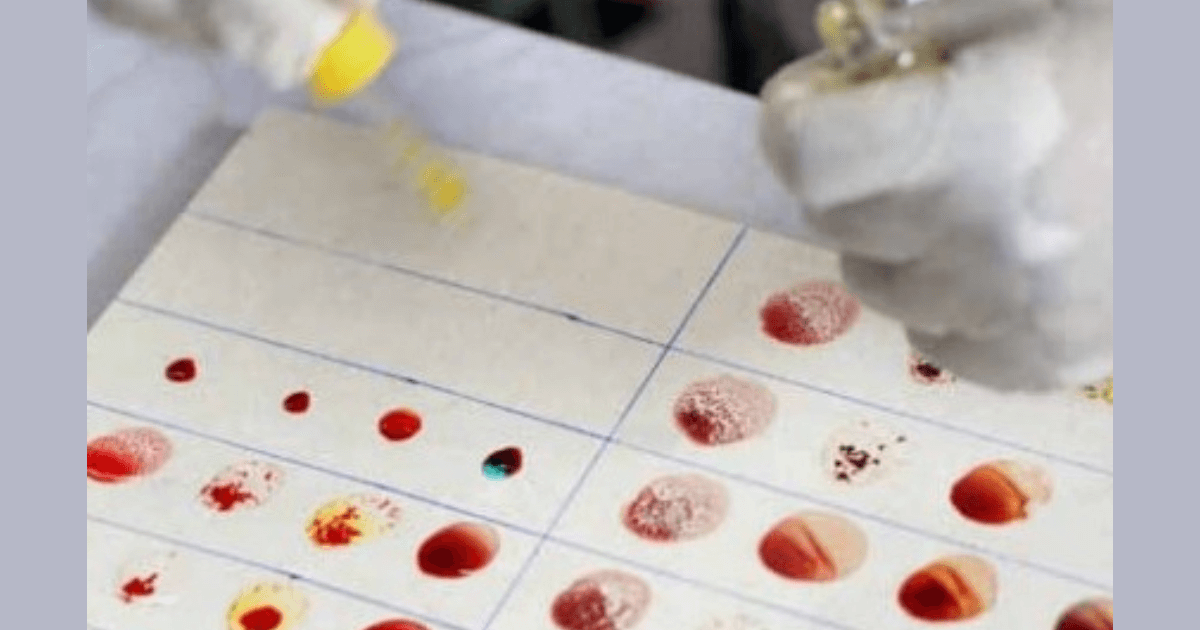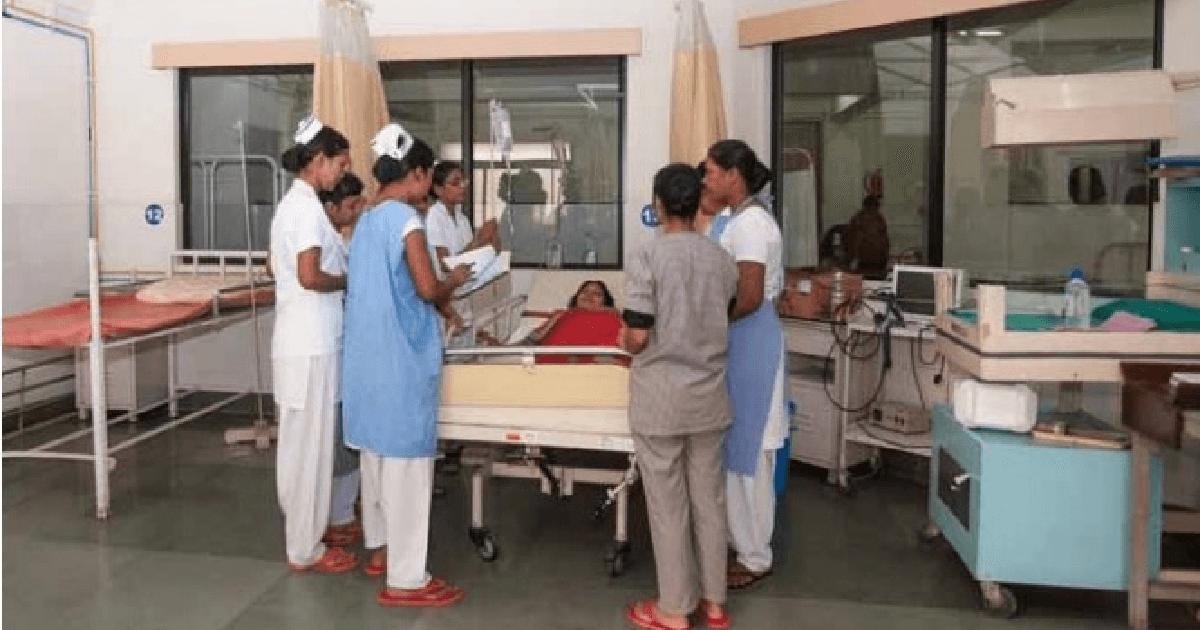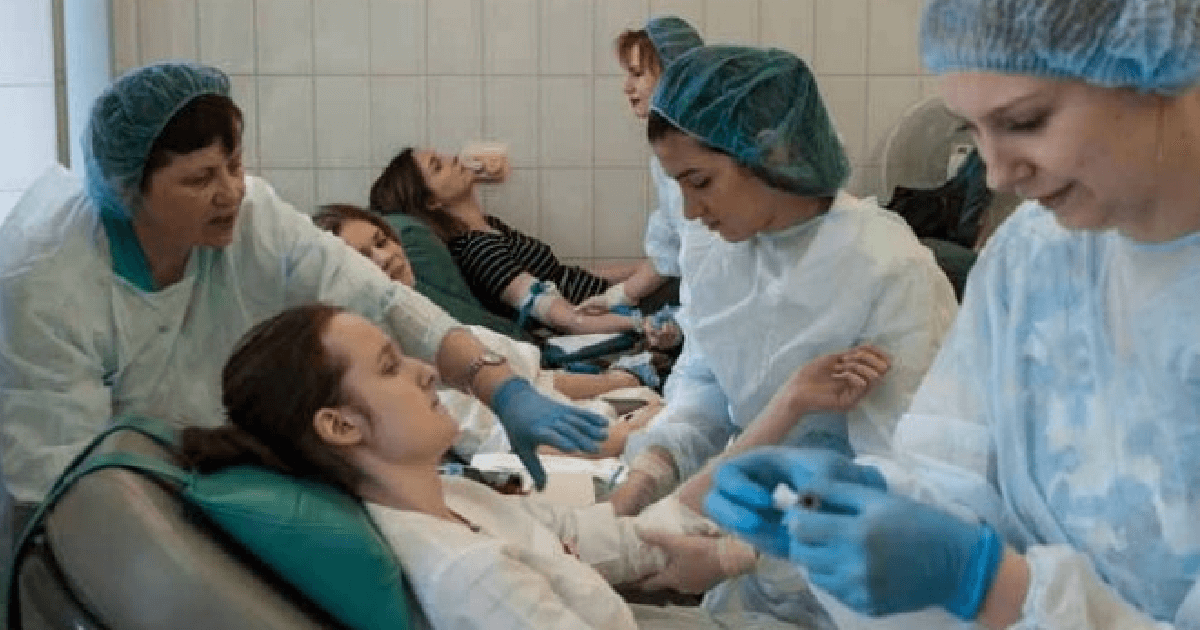Budget 2020: What the healthcare sector was expecting from the union budget
Whenever there is a discussion about Healthcare, the views expressed are mainly through the lens of the stake holder. Hence, we miss the big picture and our focus streams towards narrow goals. So, before we express our expectations from the Union Health Budget 2020, let us look at some of the key facts covering the globe and India:
Key facts (Globe): At least half of the world’s population still do not have full coverage of essential health services. About 100 million people are still being pushed into extreme poverty (defined as living on 1.90 USD or less a day) because they have to pay for health care. Over 930 million people (around 12% of the world’s population) spend at least 10% of their household budgets to pay for health care.
All UN Member States, including India, have agreed to try to achieve universal health coverage (UHC) by 2030, as part of the Sustainable Development Goals.
Key facts (India): In 2018-19, the government spending on healthcare in India was only slightly greater than 1% of the GDP; this is very low compared to government spending on healthcare at 7% to 12% of GDP in other developing countries. The expectation is positive steps to move the budget allocation and therefore increased government spending on healthcare.
While the Indian healthcare sector has grown at a healthy double-digit rate, challenges in access to quality and affordable healthcare persist in large parts of the country. With less than 1 physician per 1000 population, India is well behind its peer countries. It needs an additional 3.6 million hospital beds to reach the recommended capacity.
Only about 27% of India’s population is covered around any form of health insurance and the out of pocket expenditure on health is 62.4% in India as compared to the world average of 18.2%.
The medical technology industry plays a crucial role throughout the healthcare lifecycle and has been instrumental in transforming healthcare ecosystems across the world. For India too, the MedTech industry offers the potential to address the healthcare issues by using a mix of existing as well as cutting-edge technologies.

Out-of-pocket (OOP) health expenses drove 55 million Indians- -more than the population of South Korea, Spain or Kenya–into poverty in 2011-12, and of these, 38 million (69%) were impoverished by expenditure on medicines alone, according to calculations by the Public Health Foundation of India (PHFI), an advocacy, which were released on June 6, 2018, and based on the official Indian standard for poverty line–a monthly expenditure of Rs 816 in rural areas and Rs 1,000 in urban areas.
Part of the root cause is low public investment in health. According to WHO, India ranks 184th out of 191 countries in terms of percent-of-GDP spending on health. At around $29 (PPP), Sri Lanka, China, and Thailand all invest three to four times more per capita. The low provision of pro-poor services leads to an undue reliance on out-of-pocket financing for health. Currently, 85.9% of private healthcare is financed out-of-pocket—only Pakistan, Bhutan, Myanmar and Bangladesh have higher rates in South Asia.
Healthcare inflation is about 15 to 17 % hence healthcare costs go up by 15% to 17% annually. The Indian healthcare sector has the potential to be amongst the highest revenue and employment generator for the country. The ability of private healthcare providers to create five direct jobs plus many more indirect jobs per bed and two and half times multiplier on capital invested, should be considered as a positive by the policy makers.
Overview
The answer to India’s Healthcare woes is Universal Health Coverage (UHC): UHC means that all individuals and communities receive the health services they need without suffering financial hardship. It includes the full spectrum of essential, quality health services, from health promotion to prevention, treatment, rehabilitation, and palliative care.
UHC enables everyone to access the services that address the most significant causes of disease and death, and ensures that the quality of those services is good enough to improve the health of the people who receive them.
Protecting people from the financial consequences of paying for health services out of their own pockets reduces the risk that people will be pushed into poverty because unexpected illness requires them to use up their life savings, sell assets, or borrow – destroying their futures and often those of their children.
Achieving UHC is one of the targets the nations of the world set when adopting the Sustainable Development Goals in 2015. Countries that progress towards UHC will make progress towards the other health-related targets, and towards the other goals. Good health allows children to learn and adults to earn, helps people escape from poverty and provides the basis for long-term economic development.
What UHC is not:
There are many things that are not included in the scope of UHC:
UHC does not mean free coverage for all possible health interventions, regardless of the cost, as no country can provide all services free of charge on a sustainable basis. UHC is not just about health financing. It encompasses all components of the health system: health service delivery systems, the health workforce, health facilities and communications networks, health technologies, information systems, quality assurance mechanisms, and governance and legislation.
UHC is not only about ensuring a minimum package of health services, but also about ensuring a progressive expansion of coverage of health services and financial protection as more resources become available.
UHC is not only about individual treatment services, but also includes population-based services such as public health campaigns, adding fluoride to water, controlling mosquito breeding grounds, and so on. UHC is comprised of much more than just health; taking steps towards UHC means steps towards equity, development priorities, and social inclusion and cohesion.
How can countries like India make progress towards UHC?
Many countries like India are already making progress towards UHC. All countries can take actions to move more rapidly towards it, or to maintain the gains they have already made. In countries where health services have traditionally been accessible and affordable, governments are finding it increasingly difficult to respond to the ever-growing health needs of the populations and the increasing costs of health services.
Moving towards UHC requires strengthening health systems in all countries. Robust financing structures are key. When people have to pay most of the cost for health services out of their own pockets, the poor are often unable to obtain many of the services they need, and even the rich may be exposed to financial hardship in the event of severe or long-term illness. Pooling funds from compulsory funding sources (such as mandatory insurance contributions) can spread the financial risks of illness across a population.
Improving health service coverage and health outcomes depends on the availability, accessibility, and capacity of health workers to deliver quality peoplecentred integrated care. Investments in quality primary health care will be the cornerstone for achieving UHC around the world. Investing in the primary health care workforce is the most cost-effective way to ensure access to essential health care will improve. Good governance, sound systems of procurement and supply of medicines and health technologies and wellfunctioning health information systems are other critical elements.
Why is primary health care the soul of UHC?
Primary health care is an approach to health and wellbeing centred on the needs and circumstances of individuals, families and communities. It addresses comprehensive and interrelated physical, mental and social health and wellbeing. It is about providing whole-person care for health needs throughout life, not just treating a set of specific diseases. Primary health care ensures people receive comprehensive care, ranging from promotion and prevention to treatment, rehabilitation and palliative care as close as feasible to people’s everyday environment.
WHO has developed a cohesive definition of primary health care based on three components: ensuring people’s health problems are addressed through comprehensive promotive, protective, preventive, curative, rehabilitative, and palliative care throughout the life course, strategically prioritizing key system functions aimed at individuals and families and the population as the central elements of integrated service delivery across all levels of care;

systematically addressing the broader determinants of health (including social, economic, environmental, as well as people’s characteristics and behaviours) through evidenceinformed public policies and actions across all sectors; and empowering individuals, families, and communities to optimize their health, as advocates for policies that promote and protect health and wellbeing, as co-developers of health and social services through their participation, and as self-carers and caregivers to others. Primary health care is the most efficient and cost-effective way to achieve universal health coverage around the world.
To meet the health workforce requirements of the Sustainable Development Goals and universal health coverage targets, over 18 million additional health workers are needed by 2030. Gaps in the supply of and demand for health workers are concentrated in low- and lower-middle-income countries. The growing demand for health workers is projected to add an estimated 40 million health sector jobs to the global economy by 2030. Investments are needed from both public and private sectors in health worker education, as well as in the creation and filling of funded positions in the health sector and the health economy.
UHC emphasizes not only what services are covered, but also how they are funded, managed, and delivered. A fundamental shift in service delivery is needed such that services are integrated and focused on the needs of people and communities. This includes reorienting health services to ensure that care is provided in the most appropriate setting, with the right balance between out- and in-patient care and strengthening the coordination of care. Health services, including traditional and complementary medicine services, organized around the comprehensive needs and expectations of people and communities will help empower them to take a more active role in their health and health system.
Can UHC be measured?
Yes. Monitoring progress towards UHC should focus on 2 things: The proportion of a population that can access essential quality health services. The proportion of the population that spends a large amount of household income on health.
Together with the World Bank, WHO has developed a framework to track the progress of UHC by monitoring both categories, taking into account both the overall level and the extent to which UHC is equitable, offering service coverage and financial protection to all people within a population, such as the poor or those living in remote rural areas.
WHO uses 16 essential health services in 4 categories as indicators of the level and equity of coverage in countries:
Reproductive, maternal, newborn and child health:
- family planning
- antenatal and delivery care
- full child immunization
- health-seeking behaviour for pneumonia Infectious diseases:
- tuberculosis treatment
- HIV antiretroviral treatment Hepatitis treatment:
- use of insecticide-treated bed nets for malaria prevention
- adequate sanitation
Noncommunicable diseases:
- prevention and treatment of raised blood pressure
- prevention and treatment of raised blood glucose
- cervical cancer screening
- tobacco (non-) smoking
- Service capacity and access
- basic hospital access
- health worker density
- access to essential medicines
- health security: compliance with the International Health Regulations
Each country is unique, and each country may focus on different areas, or develop their own ways of measuring progress towards UHC. But there is also value in a global approach that uses standardized measures that are internationally recognized so that they are comparable across borders and over time.
WHO has shown the way:
UHC is firmly based on the 1948 WHO Constitution, which declares health a fundamental human right and commits to ensuring the highest attainable level of health for all. On 25–26 October 2018, WHO in partnership with UNICEF and the Ministry of Health of Kazakhstan hosted the Global Conference on Primary Health Care, 40 years after the adoption of the historic Declaration of Alma-Ata. Ministers, health workers, academics, partners and civil society came together to recommit to primary health care as the cornerstone of UHC in the bold new Declaration of Astana. The Declaration aims to renew political commitment to primary health care from governments, non-governmental organizations, professional organizations, academia and global health and development organizations.
The Union Budget for Healthcare should be framed with this background:
With a majority in Lok Sabha, the Modi Government can amend the constitution to make health a fundamental human right (on the same grounds as the 1948 WHO Constitution) and commit to ensuring the highest attainable level of health for all. This can be made as a budget announcement which will be historic step for India.

Priority sector status must be accorded to the healthcare industry.
A separate bureaucratic cadre christened as “Indian Healthcare Services” on lines like IAS should be established to ensure that Health gets the highest priority.
We need a multi-pronged approach from the government to strengthen and reform the healthcare sector in India. On the one hand, it involves improving the state of public healthcare by increasing budgetary allocation, establishing more Medical/Paramedical/Pharmacy/ Nursing colleges and improving primary healthcare facilities. On the other hand, it involves measures to enable the private sector to spread its presence beyond the urban population. This will help in improving accessibility for secondary and tertiary care in tier 2/3 towns and rural areas. For the latter to happen, the government must offer major incentives and tax breaks to private healthcare organizations setting shop in non-urban areas. These incentives can include income tax breaks for first five years of operations, help in procuring land, making medical equipment GST free for such hospitals and relaxation on service tax on hospital inputs. Similarly, establishing a mechanism to offer fund support or subsidization in treatment cost to private hospitals in smaller towns and rural areas can go a long way in bridging the accessibility gap. This will also help generate jobs and make quality healthcare more accessible.
Home and Ambulatory Healthcare should be recognized as a separate sub-sector of Healthcare as it forms the backbone of primary healthcare and addresses lack of adequate hospital beds especially for rural areas. This should also include increased tax incentives for preventive health checkups under 80D.
Allowing FDI in E-pharmacy sector and recognition of E-pharmacies under Drugs and Cosmetics Act is another impending reform.
The government’s flagship scheme Ayushman Bharat PMJAY, in its first year, has managed to empanel over 15,000 hospitals. Currently only 3.57 crore families of the original 10.74 crore families have been issued golden cards, and this number is expected to go up significantly this year. The government will therefore need to substantially increase its previous year’s allocation of INR 6000 crore as it attempts to expand the scheme’s footprint this year and eventually merge it in the long run with other schemes such as ECHS, ESI, and CGHS.
The government must consider credit guarantee for hospitals under PMJAY and other Government insurance schemes, since payments take time to come to the hospital. The government should incentivize /give credit guarantee to lenders who are willing to fund the receivables.
Challenges across multiple dimensions that were disablers to the growth of indigenous medical devices manufacturing in India need to be addressed. These include aspects around the macroeconomic environment, the medical devices ecosystem and, those specific to the medical devices industry.
Unfavourable duty structure: An unfavourable duty structure in many segments/sub-segments make imports cheaper than manufacturing in India segments/sub-segments make imports cheaper than manufacturing in India.

Lack of comprehensive laws and lax enforcement mechanisms for IP protection: IP protection for novel technology is critical for the success of global medical devices players investing outside their home market. In the absence of enforceable IP laws, global players would lack confidence to invest in manufacturing assets, thus limiting India manufacturing (suppliers, raw material etc.) for medical device manufacturing.
Medical technology has the potential to do the same for healthcare by leapfrogging over the current infrastructural, skill based, geographical and affordability constraints. Medical Technology can bridge the distance between the care provider and the patient thereby helping patients in remote areas access specialist and specializedcould intervene include: Setting up an independent authority for medical devices and enabling faster grant of patents.
Supporting local demand of medical devices through public health and health insurance programs as well as by collaborating with the private sector through PPP models. Providing relevant financial incentives for the industry.
Ease of doing business: India still lags behind most countries in terms of ease of doing business. Due to complex regulatory requirements, products currently require multiple agency approvals. This leads to time delays at multiple layers, at both the national and state levels.
Limited availability of skilled workforce and restrictive labor laws: Despite sufficient human capital, there are unfavourable labor laws and limited trained workforce in India to install operate, repair and service equipment.
Inadequate ecosystem support (suppliers, raw material etc.) for medical device manufacturing. Medical technology has the potential to do the same for healthcare by leapfrogging over the current infrastructural, skill based, geographical and affordability constraints. Medical Technology can bridge the distance between the care provider and the patient thereby helping patients in remote areas access specialist and specialized equipment present in large cities far away. Technological advancements in the fields of health monitoring and diagnostics can help in detecting health issues early on thereby reducing overall cost of care and enhancing wellness levels of the society. Similarly, technological interventions are rapidly increasing the precision and efficacy of treatment modalities thereby improving clinical outcomes. However, to realize this opportunity at scale rather than as isolated, fragmented initiatives, both the government and the industry will need to make concerted efforts.
Some of the key areas where government could intervene include: Setting up an independent authority for medical devices and enabling faster grant of patents. Supporting local demand of medical devices through public health and health insurance programs as well as by collaborating with the private sector through PPP models. Providing relevant financial incentives for the industry. Supporting innovation in India by providing capital and infrastructure support to MedTech start-ups. In addition, as the road map for medical devices manufacturing is charted, learning that created growth trajectories of other industries can be adopted: Liberalization and opening up of markets policy reforms (ease of doing business).
Financial and non-financial incentives (in terms of import duty, export duty, SEZs). Designing comprehensive laws and a robust regulatory environment for high IP industries. Government expenditure to initiate ecosystem development. Government should also come up with medical innovation fund separately to boost health tech start-ups.
The Government must allocate funds for improving the school infrastructure to ensure hygienic and healthy school environment, improved meal experience, clean hand wash and sanitation facilities. The Government must focus on the convergence of drinking and potable water schemes of the Jal Shakti Ministry with the MidDay Meal Programme by earmarking the budget for the scheme.
The Government must make budgetary allocations for monitoring the growth and development of all the children in Primary and Upper Primary Schools and set up a parallel linkage with the National Health Mission in cases of referrals. We are also hopeful that the MDM Programme will be aligned with the parameters of POSHAN Abhiyan to address child malnutrition using various interventions.
Life saving equipment such as ventilators, BIPAP and CPAP, etc. have been placed under heavy taxes. Even something as basic as crutches and wheelchairs have been put under the 5% to 7.5% GST bracket. These are essentials and should not have been taxed. It is perplexing to see how the medical equipment spare parts are being taxed under the highest slot of 28% GST. This is highly debilitating for the healthcare industry. There should be a critical evaluation of the situation and that there should be serious thought given to make healthcare essential equipment tax free.
AI has the potential to solve many problems of Healthcare Delivery in the country. Access to large volumes of quality data is vital for the success of AI. More budget allocation towards R&D in medical device innovation and digitization of care delivery process through right investment in tools, infrastructure and training will help us to meet some of the challenges in the Healthcare Industry.
The government should accord due recognition to the emergency medical services (EMS) industry and recognise it as an independent sector within the healthcare industry. 90% of the EMS space is controlled by the government. The sector is in urgent need of impetus in the form of budgetary allocation of funds so that even the remotest parts of the country have access to timely quality medical care. There is a severe demand supply gap when it comes to the availability of ambulances in India with the ratio of ambulances per capita pegged at 1:146249. We need to move to a ratio of 1:60000 and this can only happen if the government incentivises the industry in the form of subsidies. The government should also invest in setting up skill centres for training paramedics and emergency medical technicians. While the government is already taking steps to improve road connectivity, we believe the government should look at increasing the accessibility of emergency medical services through station ambulance services on national highways and medical units on trains.
Globally there is acceptance of the growing significance of molecular genetics in diagnosis as well as clinical management of various cancers. The government should help create a regulatory environment extremely conducive for promoting research in the field of cancer genetics by creating a hub for cancer research. Quality research in cancer genetics will go a long way in making new therapies available to Indian patients at very affordable costs.
The Indian Pharmaceutical industry is a sunrise industry with a competitive advantage for India. We should leverage India’s position by unleashing entrepreneurial spirit through policy stability and ecosystem.
There is an utter need to spread awareness amongst the masses to promote health insurance which has become a must considering the current healthcare cost in the country. Enhancing the tax rebate under Section 80D from the current value of Rs. 25, 000 to Rs. 1,50, 000 can be a great move by the government. Under this year’s budget, the government must waive off the GST charges which are currently 18% on health insurance premiums.
Another expectation in this year’s budget is giving the consumers ability to pay level premiums to 5 years with multiple payment modes as available in other insurance industries like Life Insurance. The payment methods can be extended to monthly, quarterly, half-yearly, and limited pay in order to make the premium payment process convenient for the consumers. This will surely make Healthcare in India affordable and accessible.
Currently, the health insurance industry in India has a long gestation period and it takes a long time for the insurers to achieve a break-even. As per the industry experts, the limit of eight years for carry forward and set-off of business losses is not sufficient. This limit must be increased.
India is the second most populous country in the world. The death rate has declined but birth rates continue to be high in most of the states. Health care structure in the country is overburdened by increasing population Family planning programs need to be (re)activated by the Government.
To boost Quality in Healthcare, the Government must incentivize organizations who have NABH Accreditation; it could be in terms of tax benefits, GST benefits, Local self governments tax benefits, etc.
Composed by Dr. Rajeev Boudhankar, Health Systems Management

